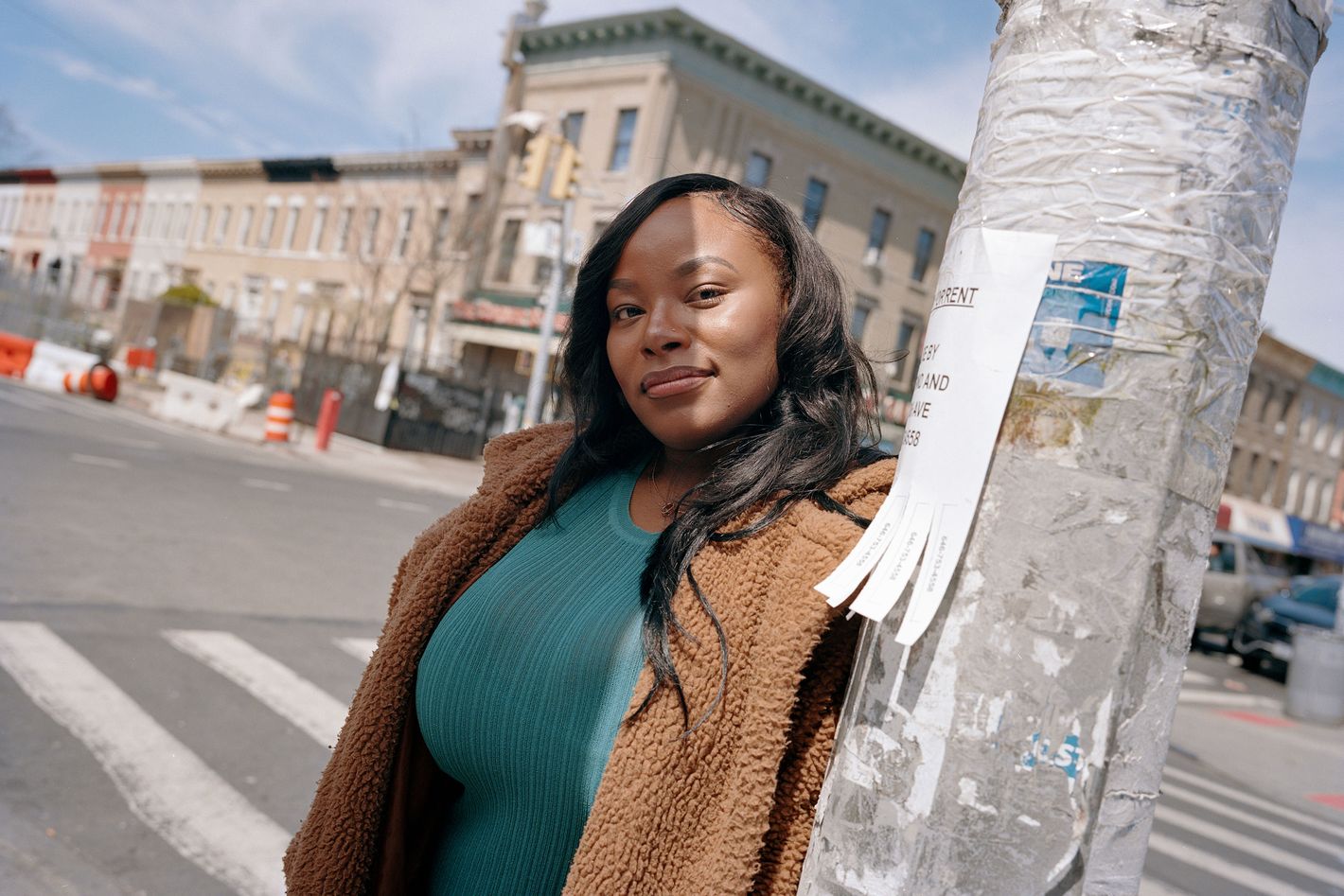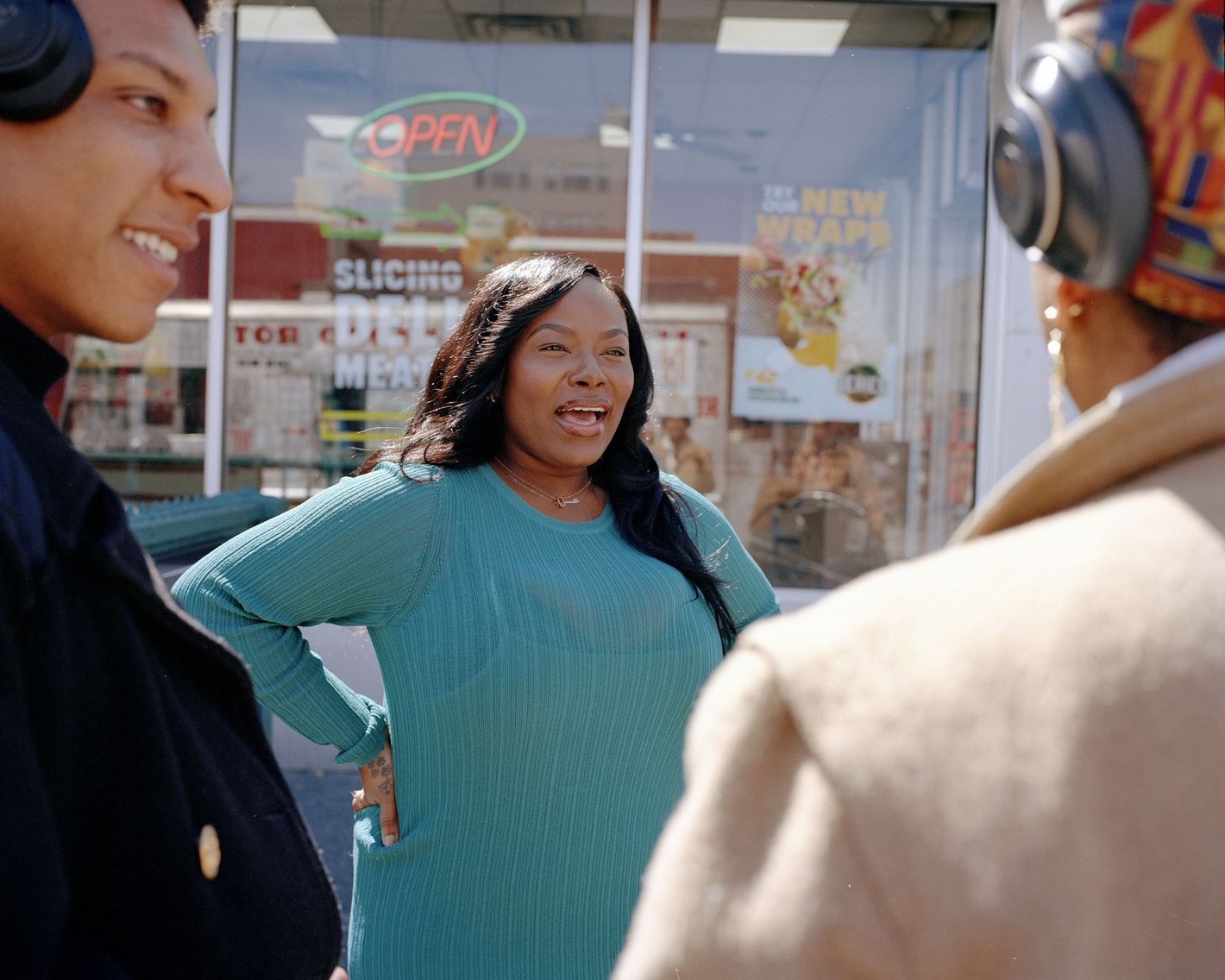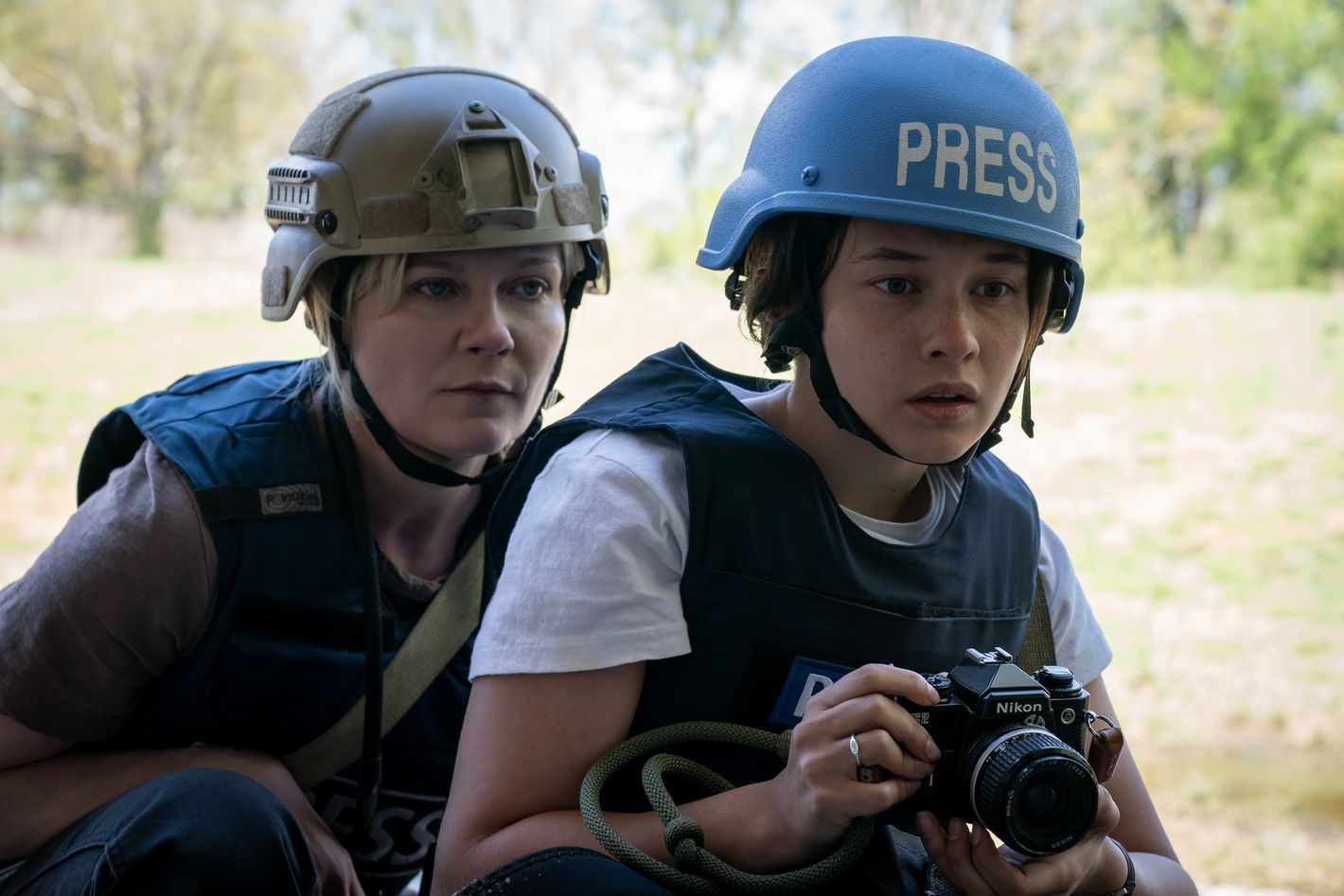
Last month, critics of Eric Adams who’ve wanted the camera-friendly, hard-partying mayor to publicly answer for his tough-on-crime agenda got some catharsis. Adams appeared on the popular hip-hop morning radio show The Breakfast Club alongside an activist and political commentator named Olayemi Olurin. She held Adams verbally captive from the jump, needling the mayor for bragging that New York City is safe while also using “fearmongering” rhetoric to justify a bigger police presence. “Is it safe or is it not?” she asked. The mayor, so used to deploying charisma or bluster to evade criticism, instead stuttered, squirmed in his chair, and turned his back on Olurin to face the show’s hosts. “You would realize how I turned the city around if you follow everything I do,” Adams told Olurin. “I would say ‘no,’ but we can get to that,” she snapped back.
Olurin had been preparing for this moment for years. Since Adams’s election she’d used every available platform, from social media to op-eds to media appearances, to attack his handling of Rikers Island, the migrant crisis, homelessness, and bail reform. (AOC is a “big fan” and John Oliver once gave her a shout-out on his show.) For the better part of 50 minutes, she forced Adams to explain his support for policies that criminalize poor Black New Yorkers. Any time he questioned her facts, Olurin, a former public defender, cited reports and statistics to back them up. The dressing-down came at a particularly vulnerable time for Adams, with his approval rating in the toilet, a federal investigation into his campaign looming, and a sexual-assault lawsuit to fight. “Someone call in a wellness check on the Eric Adams comms team,” one reporter wrote on X after the interview aired. The former editor-in-chief of Rolling Stone called it “the most important interview of Eric Adams in a long, long time.”
On a sunny Friday afternoon the following week, I meet up with the 30-year-old to take a walk in Flatbush, one of the Black working-class communities Adams claims to represent and where Olurin lives. We pass the bodega where they know her sandwich order (Salsalito turkey with Sazón, jalapeños, and cheese) and a boutique filled with mannequins wearing colorful head wraps where she recently got her measurements taken for a dress. “It’s so Caribbean and it reminds me of home,” the Bahamas native tells me. She says “hi” to strangers as she bounds down the street. “I literally walk my neighborhood any time of night,” she says. “Never has any crime happened to me, I’ve never felt unsafe, none of that.” In just five minutes of walking, we see six cops. Olurin points out a police van and two officers standing guard outside a playground where three boys are playing basketball. “He becomes mayor and this is what we get,” she says. “This is a Black neighborhood. And so we have an exorbitant amount of police.”
When I say I hate Eric Adams, it really means I hate what he stands for. If Eric Adams resigned tomorrow, you would never hear me say his name again.
Lately, Olurin feels like she has a target on her back. The NYPD’s top brass have been going after her on social media since the interview, in which she’d said Adams seems to care more about a cop who was recently killed during a traffic stop than the “at least seven” civilians killed by NYPD officers this year. “This ‘Movement Laywer’ [sic] epitomizes everything that true NYers are against !” the NYPD’s chief of patrol wrote on X; the deputy commissioner piled on. Watching the NYPD lose “the fight in the court of public opinion online,” she says, “makes me nervous. Are these people gonna retaliate and do something in real life.” As an attorney, Olurin is well aware of her rights. But as a Black woman, she also knows that officers could violate those rights at any time. For two weeks, Olurin didn’t go out on her daily five-mile walk. Her doctor told her she was under high stress and gave her a heart monitor. She took down the Bahamian flag hanging outside of her apartment window, worried that officers would find out where she lives. “They’ll probably identify me,” she says. “How many Bahamian Nigerians are there?”
Inside her apartment, though, Olurin is at ease. Wearing a shirt that says “May all the motherfuckers who spite me burn in hell for all of eternity,” she sits cross-legged on a purple couch, the walls around her covered with images of Tupac, Malcolm X, and characters from Dragon Ball Z and The Boondocks, all made by Black artists. She tells me she was raised by strict parents who saw three career options for their five children: doctor, lawyer, or engineer. Olurin was the natural debater of the bunch. To watch a Harry Potter movie, she had to convince her grandmother via PowerPoint presentation that the film wouldn’t corrupt her brain. She also coaxed her parents into letting her attend high school in the U.S. so that she could more easily become a lawyer. At her West Virginia boarding school, Olurin was voted “most opinionated,” which came as something of a shock. Bahamians tend to be boisterous, so “I never thought of myself as a loud person that has this animated personality,” she says, raising her hands.
She was also the only Black girl in her high-school senior class. Olurin remembers one of her classmates saying that “Black people can’t swim and that we like chicken and watermelon or whatever.” Bahamians are always in the ocean and have no preference for either of those foods; she was confused. “I hadn’t figured out the word racist yet,” she says. “I knew something wasn’t adding up, but it was hard for me to navigate.” She went on to Ohio University, where she minored in African American studies, watched the Ferguson protests unfold, and decided to become a public defender so that she could help fight systemic racism.

Once she moved to New York for law school, Olurin was so broke that she struggled to afford subway fare. “I understood deeply what it was like to be poor in the city,” she says, “and to have that be received so negatively.” After graduating in 2018, she got a job with the Legal Aid Society, where she spent her days arguing that her clients didn’t deserve jail time for petty crimes like jumping a subway turnstile. In 2021, she posted a video that appeared to show an NYPD officer kneeling on one of her client’s necks to Twitter. She got the charges dismissed, and the media attention made her realize she could have more of an impact on the criminal-justice system by becoming an advocate. She was also becoming disenchanted with Legal Aid. “It’s incredibly stressful. It’s incredibly underpaid,” she says. Olurin quit at the end of 2022 to become, as she puts it, a “professional loudmouth.”
While paying her bills with a full-time job helping criminal-justice reform advocates to craft their messaging in the media, she started a YouTube channel last year. It hosts lively podcasts where she and guests debate topics like, “Are More Black People Becoming Republican?” as well as political deep-dives, including a two-hour-long magnum opus branding Adams “the Worst Mayor in America” over his support for racist policing policies like stop and frisk. She has a loose-lipped, energetic style in these videos that’s a stark contrast to the talking heads on cable news. She swears, wears bright-red lipstick, and calls herself “a bitch who’s chronically online.”
Olurin first appeared on The Breakfast Club in 2022 to talk about criminal-justice issues. After she criticized the program for platforming Candace Owens in March, co-host Charlamagne tha God called Olurin and invited her back to square off with the mayor. She doubted Adams would actually show up to their interview — “I think I am his loudest critic” — but threw herself into prep anyway. She sourced every stat she planned to quote, from the 31 people who have died on Rikers Island on Adams’s watch to the $17 million he cut from the jail’s programming budget. A defense attorney “has to be in tune with the facts,” she says. “A cross-examination is basically being able to call out the discrepancies.”
I understood deeply what it was like to be poor in the city, and to have that be received so negatively.
It still came as a surprise to Olurin when Charlamagne told her Adams was en route to the studio. “Don’t hold back,” he told her. “Ask him whatever you want.” She viewed this as permission to go scorched-earth, a luxury she knows many members of the City Hall press corps don’t have. “I went into it with the recognition that this is never happening again,” she says. She did her best Olivia Pope impression — “I had to give all Black people the version of a lawyer they like to see” — and though the left praised her for delivering a knockout, Olurin thought she was “nice and polite” to Adams. “In a normal world, I wouldn’t let you shout over me,” she says. “This is me giving grace.”
Olurin hasn’t gotten any of the agent, book-deal, or pundit-contract offers that can come with viral fame since the interview aired, though. “That says a lot to me about what the media is really invested in seeing.” While she’d love a plush commentator job at a big network, Olurin’s not surprised that her phone isn’t ringing; she says “it’s often the media helping steer this ‘copaganda.’” (Olurin is, however, doing a one-off CNN appearance to analyze the Trump hush-money trial.) She feels the biggest payoff from the appearance has been attracting tens of thousands of new followers. “I feel like I always had a large white audience by virtue of being a lawyer,” she says. “But this allowed a lot of Black people who weren’t previously familiar with my work to see it.” Her ultimate goal is to have “an advocacy version of Issa Rae’s career,” she says. “I want to have my own production company and have my own platform that’s big enough to garner the traffic.”
Olurin stresses that her beef with Adams is not personal. “When I say I hate Eric Adams, it really means I hate what he stands for,” she says. “If Eric Adams resigned tomorrow, you would never hear me say his name again.” That said, it may be just a little bit personal. She and Adams exchanged numbers after the interview at Charlamagne’s urging, and the mayor texted her a few hours later to ask about the origins of her name. She told him it’s Nigerian and means “affluence befits me,” to which he responded with a yellow-skin-toned prayer-hands emoji. She found the detail “incredibly telling,” given that Adams “uses his Blackness as a convenience to sell us on, but who has no real attachment to it or community.” “I’ve never in my life seen a Black person not change the color of this emoji,” she says. “That tickled me greatly. I laughed.”
Production Credits
Photography by Chris Perez
,Photo Assistant Irma Mauro
,The Cut, Editor-in-Chief Lindsay Peoples
,The Cut, Photo Director Noelle Lacombe
,The Cut, Photo Editor Maridelis Morales Rosado
,The Cut, Features Editor Catherine Thompson

